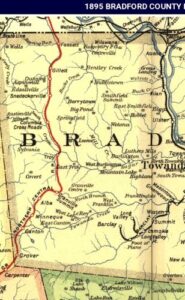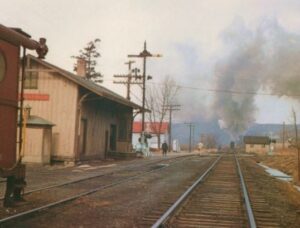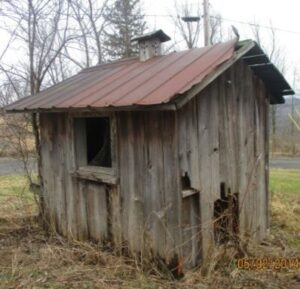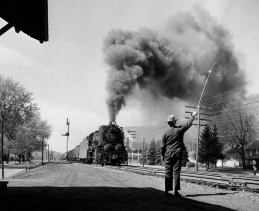Original State Line Station
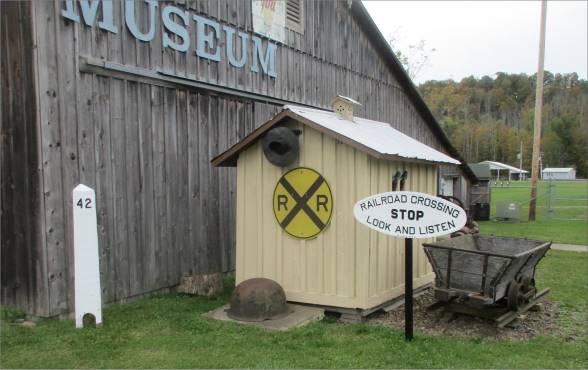
Railroad Shanty History
This railroad shanty was origionally known as the State line Station. In 1869 the depot was on the west side of Pa Route 14 on the west side of the tracks near a creek. The Northern Central Railroad can be seen on this map running through Bradford County. Map is from 1895.
Railroad Shanty Circa 1800’s
The Railroad Shanty was donated to the Heritage Village and Farm Museum by Robert and Emelia Tomko. The shanty sat vancant on their farm property which was bought in 1967. Before they knew the history of the building they used it as a pig pen.
It was believed that the telegraph office was located off Sopertown Road in Columbia Cross Roads, Pa. Dale Palmer (Board Memeber), envisioned the resotred telegraph office educating the younger generation about the telegraph on the way people used to communicate. Dale tells us that he believes the building was a telebraph office in Columbia Cross Roads around the 1800’s. He pointed to the hole in the side of the building where the telegraph line once went through. .
Telegraph was developed around the 1830’s to 1840’s by Samuel Morse and others to revoluntionize the long distance communication. Samuel Morse (1791-1872) developed the Morse Code that assigned a set of dots and dashes to each letter of the English alphabet that allowed messages to be transmitted across telegraph lines. Telegraph communications came to Bradford County in 1886. It is now believed this building was used as the Switchman’s shanty for the railroad and was located in Snedekerville, Pa. Below is the picture of the shanty before it was moved to the Heritage Villiage and Farm Museum.
What is a Train Hoop?
The most interesting artifact in the Railroad Shanty located at the Heritage Village and Farm Museum is the Train Order Hoop. It was impractical for every train to stop for messages and these poles were a simple way to pass on orders and return messages to the station.
These hoops were made of bamboo or other sapling wood that was easily manipulated. A message received via the telegraph office could be attached at one end. The train would slow down and the conductor would slip his arm through the loop, retrieve the note and drop the loop. The loop would be recovered and returned to the railroad shanty for another use. There is such a loop inside our railroad shanty that resembles the rounded ones as seen in the picture below.

